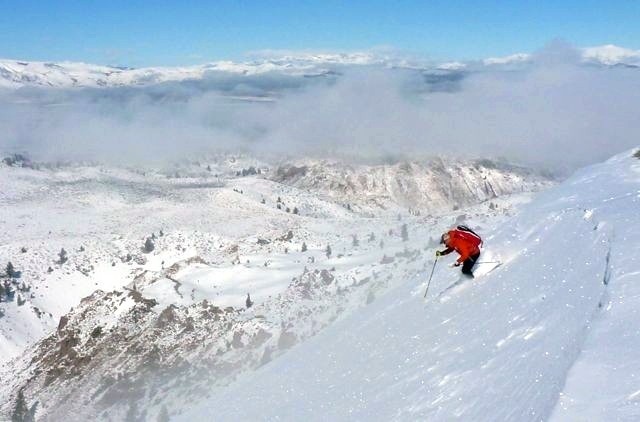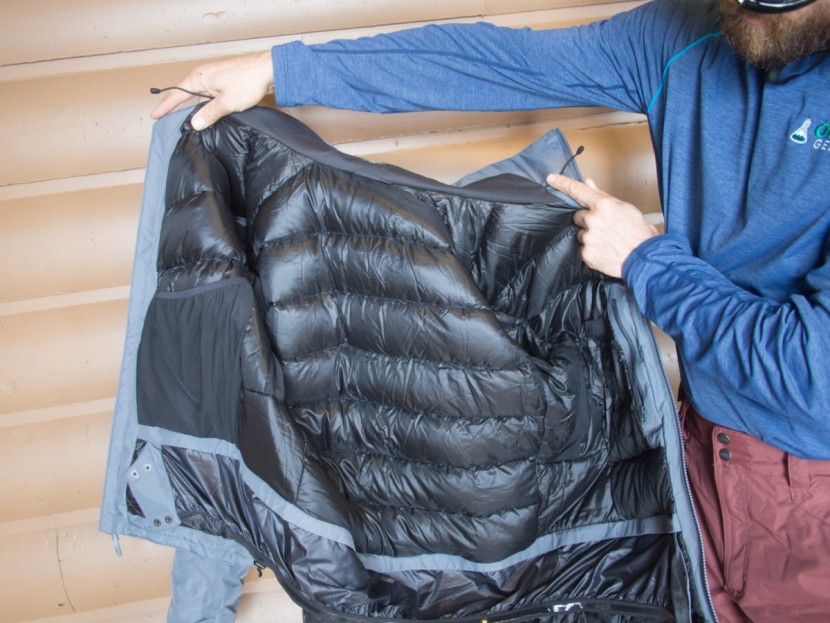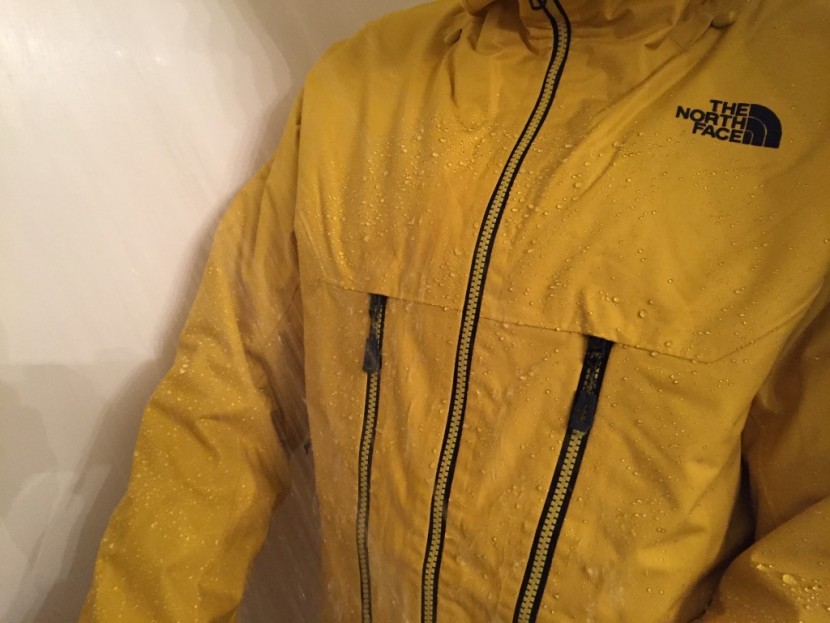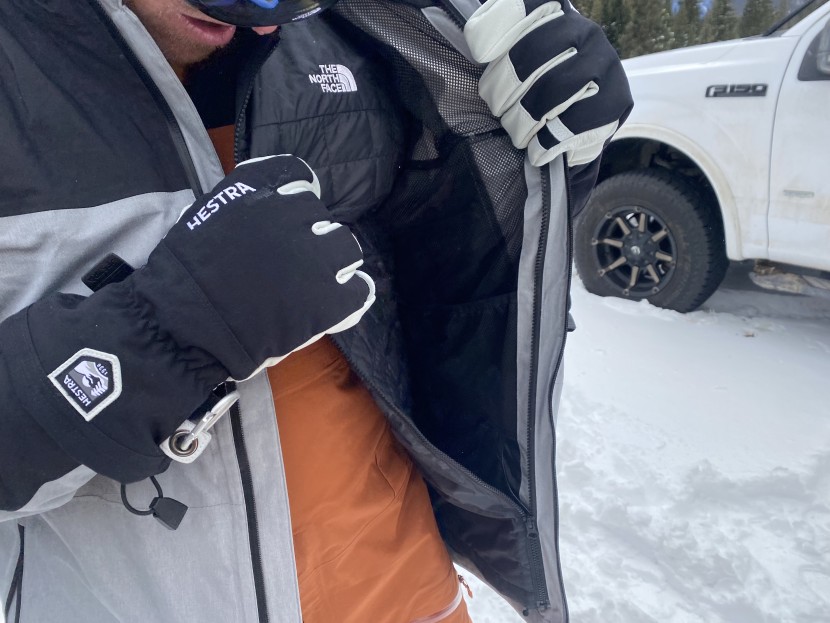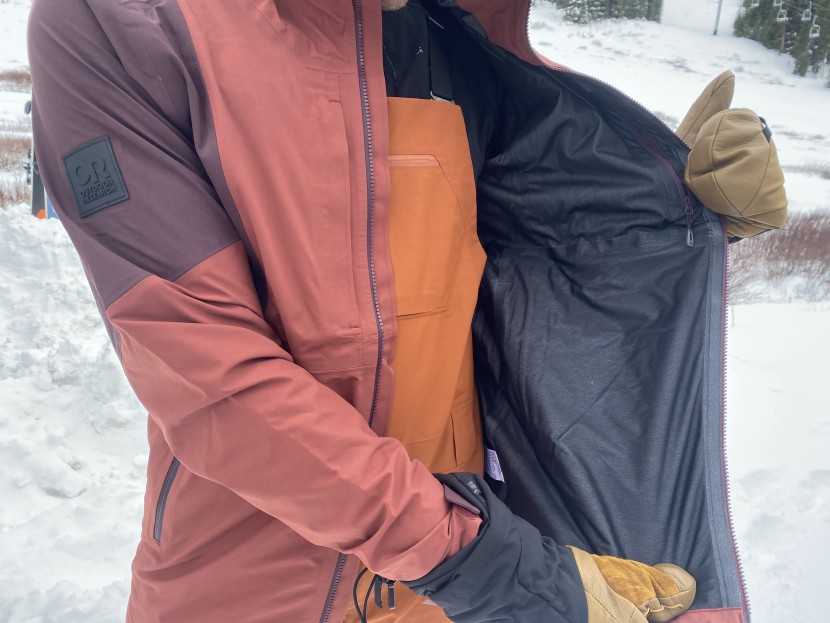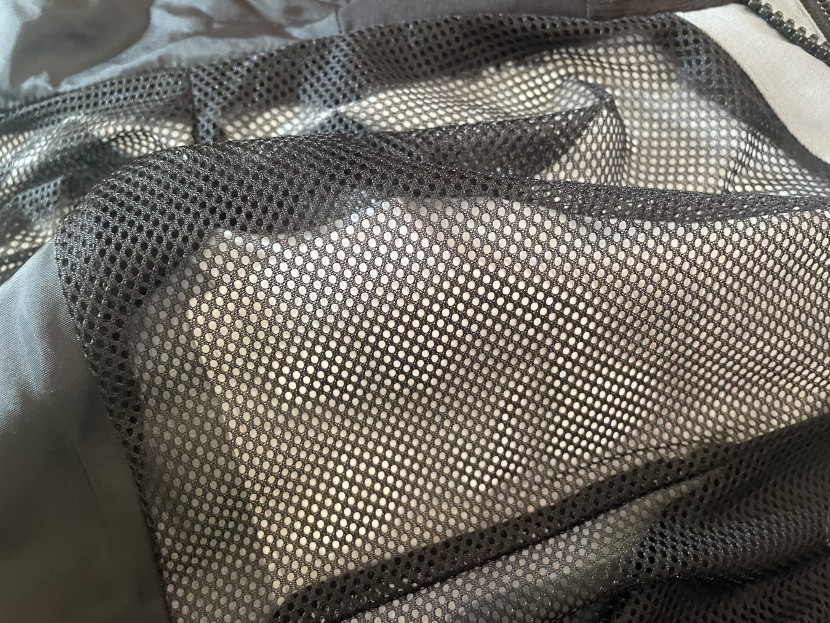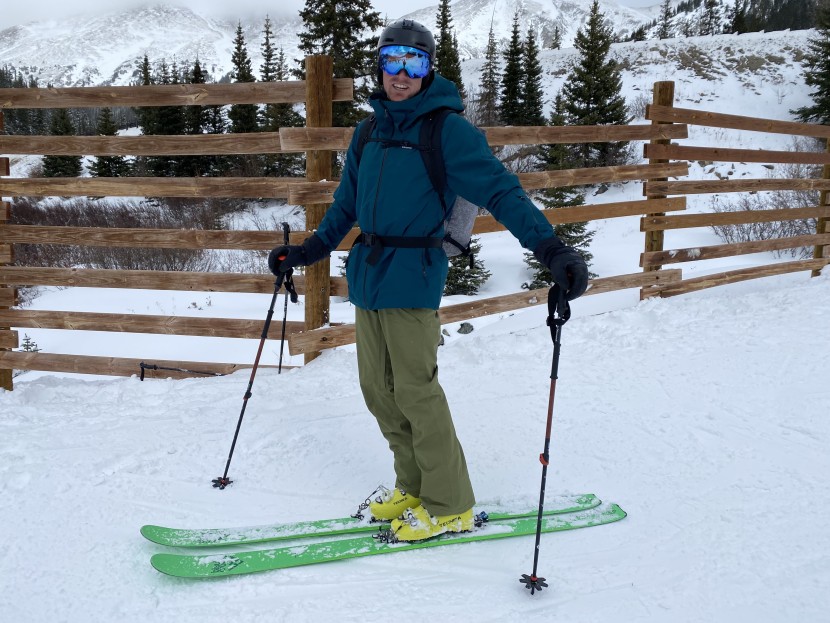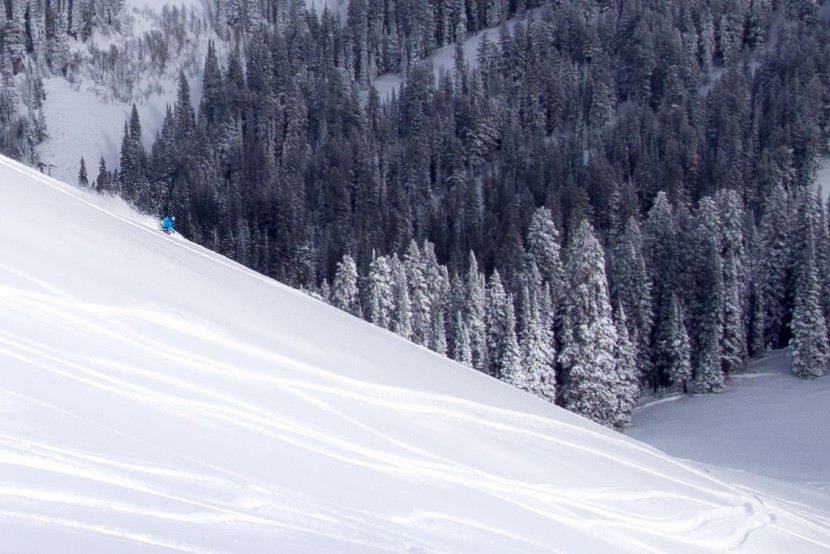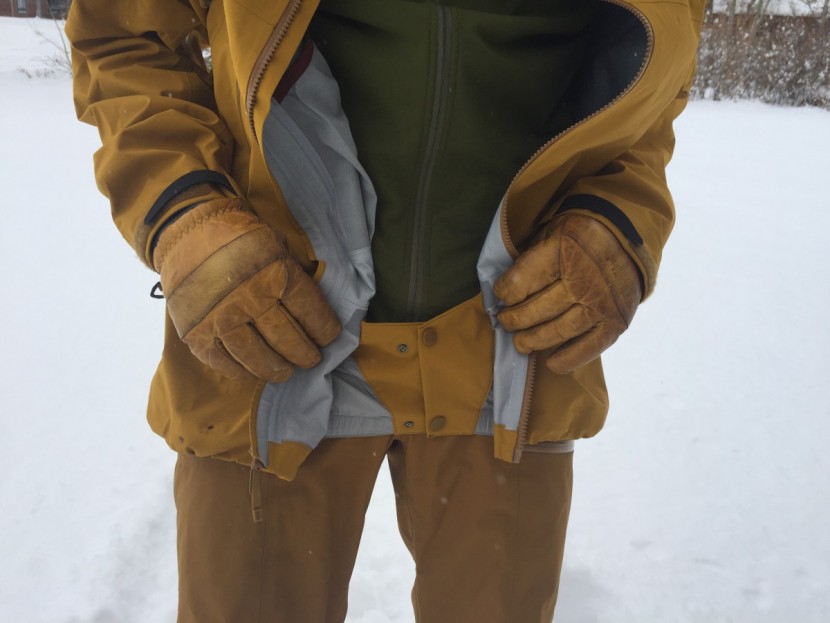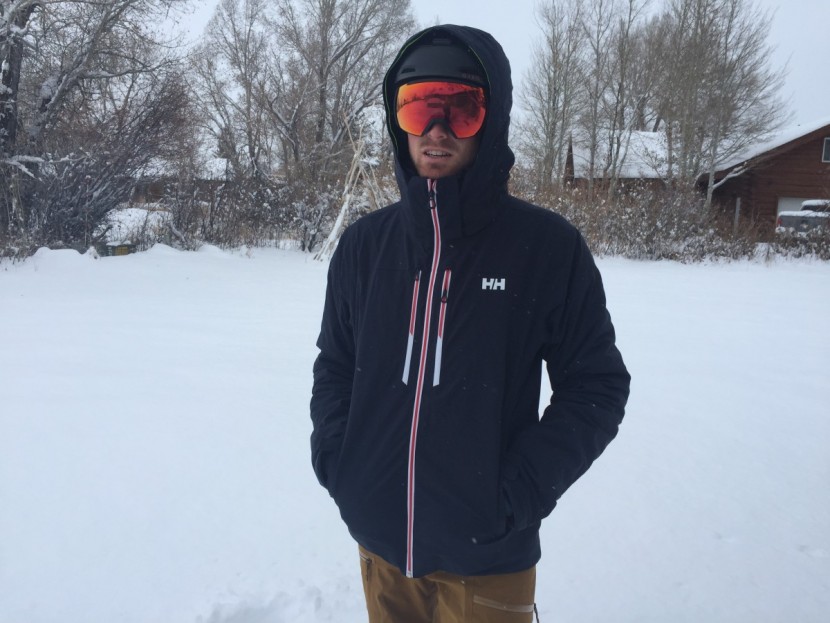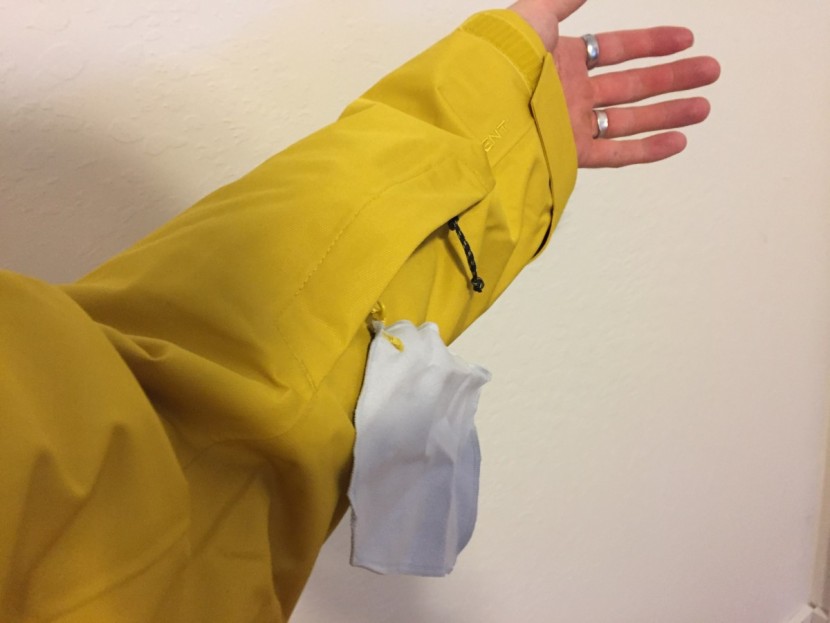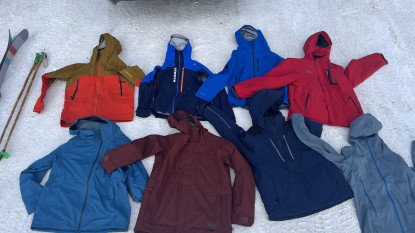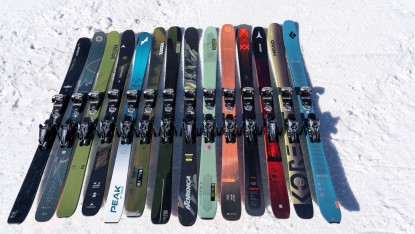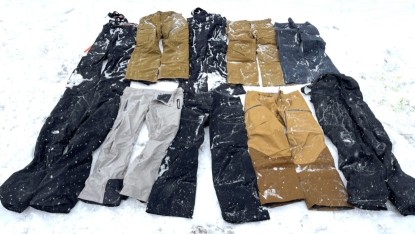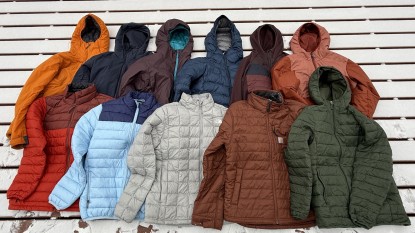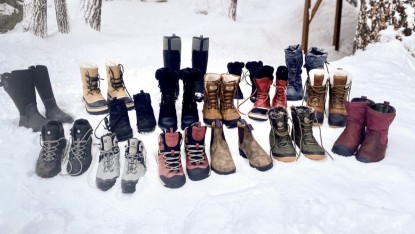There are so many top-rated ski and snowboard jackets on the market that it can be hard to sort through them all. When researching jackets, specific product terminology and technology can be confusing. This article breaks down ski jackets into parts and explains the different options available, making jacket selection easier.
Anatomy of a Ski Jacket
A good ski jacket combines two important features: the shell and the insulation. Insulation traps the heat that your body naturally produces, and the shell fabric defends the user from precipitation, wind, and impact. In theory, snow is below freezing and thus “dry,” but we all know that winter storms come in all shapes and sizes, often dumping heavy, wet snow from the skies. Also, when the snow comes into contact with our warm bodies, it can melt and become liquid water. Still, jackets designed for the coldest conditions might not have to deal with liquid water penetrating the outer shell layer. In contrast, jackets designed for conditions around 32 degrees Fahrenheit will have to deal with liquid water protection. Designers can improve weather resistance and warmth by incorporating design components like wrist gaskets, protective hoods, and long hems with drawcords.
Insulation
Jackets keep us warm by capturing our existing body heat. This heat is captured in spacious “puffy” insulation materials like goose feathers ("down") and human-made fibers ("synthetic"). Goose down is lighter than synthetic insulation per unit of warmth, and down is also more compressible, longer-lasting, and more expensive than synthetic insulation. The major downside of down insulation is that those feathers will stick together and lose their puffy character ("loft") when they get wet. On the other hand, synthetic insulation will still retain its loft when wet, keeping you warm. A more detailed discussion on the pros and cons of different insulation types can be found in our Down Jacket Buying Advice. Generally, more insulation will be warmer than less of the same kind.
Shell Fabrics
The outer shell fabric is a jacket's first line of defense against the weather. Shell materials are classified as either "hardshell" (waterproof) or "softshell" (not waterproof). If you are going to be choosing one jacket for every day of the ski season, pick a jacket with a waterproof hardshell. If you choose a jacket for sunny days and spring skiing or anticipate frigid temperatures well below freezing, a softshell jacket will protect you.
The most recognizable name in waterproof breathable membranes is Gore-Tex, which sells its fabric to jacket makers. Still, there are a handful of other competitors on the market, and many brands make and use their own proprietary waterproof and breathable membrane fabric as well. We have found that when a manufacturer claims that their fabric is waterproof, it almost always is. However, water can sneak in through zippers and seams, where the sewing threads can become saturated and transport water to the inside of the jacket. When a company wants to use Gore-Tex in its jacket, Gore-Tex inspects the jacket's design before licensing its fabric for use, checking for waterproof zippers and fully sealed seams. As such, products with the Gore-Tex brand stamp are reliably weatherproof to the extreme.
Waterproof breathable membranes and fabrics are generally treated with a chemical to make water “bead up,” and there's more on that below. You can read more about different types of weather-resistant fabrics in our Hardshell Buying Advice.
Weather Resistant Construction and Design
Besides the outer shell fabric, a jacket can be more or less weather resistant because of how it is designed and constructed. Most quality waterproof jackets will have taped seams throughout their construction that seals up this potentially compromised fabric junction. Zippers are weak points that can let water in, and jackets can defend these weak points by covering the zippers with waterproof strips of fabric. The hood design is also important. The hood must have a high collar that reaches up to your chin or lips and pull cords that synch the hood down tight around your head or helmet. Next, long sleeves and generous cuff circumferences allow gloves to be tucked in quickly and stay there for the day. Some jackets have tight and stretchy cuffs with thumb loops that effectively seal out the weather from the sleeves.
DWR Coatings and Breathability
A Durable Water Repellent (DWR) is typically applied to the exterior of any waterproof fabric with the goal of beading water off the fabric face and preventing “wet-out.” Shell fabrics comprise soft, outer fabric (the one that you can feel on the outside) and a waterproof membrane that is laminated on the inside. A waterproof jacket that looks soaked will still be waterproof, but the outer shell fabric can become saturated and uncomfortable. Furthermore, the jacket loses its breathability when the outer shell wets out. This situation means that all body perspiration will remain inside the jacket, making it feel wet on the inside and leading the wearer to question if water is indeed soaking through the shell. DWR prevents the saturation of the outer shell fabric, preventing these problems.
The downside to DWR is that it eventually wears off from scrubbing, scraping, and washing the jacket. Some DWRs (notably those from Patagonia and Arc'teryx) last a long time. Others wear off with little abrasion, so we always scrub our jackets in a shower test when reviewing them to see how durable the DWR finish is. Wash-in DWRs are readily available so that you can add DWR to your jacket in the washing machine when you notice the shell fabric wetting out. Quality DWRs are expensive, and consequently, more expensive jackets tend to bead water for longer than less expensive models.
Styles of Ski Jackets
The primary functional considerations come first. But we must also consider the style, fit, and comfort of a ski jacket.
Modular or Single Piece?
Insulated ski jackets come in two primary construction styles. Most are a single piece: a lightweight lining, an insulation layer, and a shell is quilted together. Many brands, however, offer jackets in modular construction with a separate waterproof shell and a removable insulating inner jacket. Modular 3-in-1 style jackets offer greater value and versatility. A single-piece insulated model will typically be more comfortable, lighter, and more purpose-built for a given insulating value. The modular styles allow for better temperature regulation, versatility, and more wear options.
Shell Jackets
Some users, especially those coming from hiking, camping, or climbing backgrounds, will be attracted to layering systems topped off with a waterproof shell. Shell jackets on their own offer very little in the way of warmth other than protection from the elements and a very slight amount of insulation. It is up to the user to pick and choose the insulation that they will layer underneath. For those users, look for a generous cut for adding insulation and ski helmet underneath, ski-specific features like pockets and a powder skirt, and great waist, collar, and wrist seals. Some shells on the market attach securely to matching pants for functionality that approaches a one-piece suit.
A hardshell is made of three main fabrics. The first is the outer fabric. This layer is the colored fabric on the outside of the jacket. A waterproof and breathable membrane, such as Gore-Tex, is underneath this outer fabric. This technical membrane is laminated to the inside of the outer shell fabric. This layer is usually hard to see because a third layer is often found between the technical membrane and the user. This inner lining is what the user feels on the inside of the jacket. Some lightweight rain shells eliminate this inner lining, but most ski jackets have three fabric layers.
Three-layer Shell Jackets
This type of shell has three layers of fabric laminated together into one thick fabric, so when you first look at a three-layer hardshell, it looks like just one layer. These shells are highly protective, durable, and easy to layer underneath. They generally provide very little warmth because they are designed to be worn with mid-layers underneath. Three-layer shells prioritize weather resistance and are the most protective jackets available. They are also the most expensive because laminating three layers of fabric together has a high cost to manufacturers.
Two-Layer Shell Jackets
Two-layer shell jackets have an outer shell fabric laminated to a waterproof/breathable technical membrane. Underneath the membrane, these jackets may incorporate a hanging mesh liner or insulation layers, but there is no inner lining laminated directly to the inside of the waterproof membrane. The result is a shell fabric that is cheaper to produce. Often, insulated jackets have a two-layer shell on the outside and quilted synthetic of baffled down insulation on the inside, with an inner lining fabric that the user comes into contact with. Two-layer shells are so much cheaper to make than three-layer shells that insulated two-layer jackets are often cheaper than their three-layer, shell-only brethren.
Personal Considerations
Comfort and Fit
The fit of a jacket is very personal but very important. When we purchase even the most intimate of products sight-unseen in the internet age, confirming fit is still a somewhat difficult proposition. Whenever possible, try your jacket on before purchase to be sure. When trying on a jacket (or decoding internet reviews and descriptions), consider the typical comfort criteria like the torso and arms fit and hem length. For skiing and snowboarding, it is key to consider the range of motion. A jacket must remain protective and in place through all sorts of gyrations. Longer-than-usual sleeves sewn into the jacket thoughtfully are the first key. Consider the crucial interfaces as well. The collar should protect your face without rubbing it raw.
In our extensive testing, we've found that the best collars are simple. In foul weather, few things have a greater influence on the wearer's comfort than the face/jacket interface. If this zone is bulky or rough, you may have a miserable day. If the forward part of the collar is smooth and svelte, with adequate insulation and a pleasing texture, your face will be happy. Furthermore, look at photos to ensure that the hood fits well over a helmet and that the sleeve cuffs fit over gloves.
Style
A jacket's style is also very personal. Consider the sort of statement you wish to make with what you wear. You'll likely appear in photographs in the jacket you choose. A nicely-styled jacket fits in on the slopes as well as in high-end bars. If you plan on using your ski jacket as an overall winter jacket, be sure to choose a style that will look good far from the ski slopes. Options exist on the market for both dramatic or understated looks. Many skiers have little concern about their clothing style, while others take it very seriously. The way one looks is connected inherently to how one feels, and we all like to feel good.
There is something for everyone's tastes: Some look technical, casual, and some scream, “I'm a skier/rider!”. Whatever your aesthetic, there is a jacket and color to match. The jackets in our review represent a sampling of this range of different styles.
Ski Specific Features
Compared to your favorite general-purpose winter jacket, ski jackets incorporate ski-specific features that make your day more convenient on the hill. Each model in our review offers a different combination of handy extras.
Extra Weather Resistance Features
There are several features on most ski jackets that help to enhance their weather resistance and, thus, their overall comfort. A powder skirt is one feature that seals the bottom of the jacket, keeping snow and wind out. Some powder skirts are fixed to the jacket permanently, while others can be removed to suit your needs or preference, and some jackets have no powder skirt at all. Most ski jackets have wrist cuffs that you can adjust with velcro straps. This cuff design is an important feature to help seal up the sleeve opening, especially if you wear your gloves on the outside of your sleeves. An adjustable helmet-compatible hood is also very appreciated. Like powder skirts, some hoods are permanently attached while others are removable. Either way, the best hoods are big enough to fit your head while wearing a helmet.
Pockets
We like ski jackets with lots of pockets for our accessories and essentials. They should be easy to access, conveniently placed, and waterproof. Ski-specific pockets to look for include a pass pocket on the sleeve for convenient RFID pass reading and a drop-in goggle pocket on the inside of the jacket.
Goggle Wipe
Some jackets come equipped with an attached goggle wipe. This convenient feature allows you to wipe your goggles clean whenever and wherever you are, assuming you're wearing your jacket, of course. Often these goggle wipes are attached but can be removed for cleaning goggles.
RECCO
RECCO is an avalanche rescue system that allows ski patrol to find a buried subject. A small, metallic RECCO reflector is placed somewhere in the garment worn by the skier, and in the case of a full burial in an avalanche, ski patrols can search for this reflector using a magnet on the surface. RECCO reflectors are increasingly common in ski clothing and are provided at no additional cost to the consumer. Inbounds avalanches producing full burials are rare, and this feature isn't a deal-breaker, but it's nice to have.

